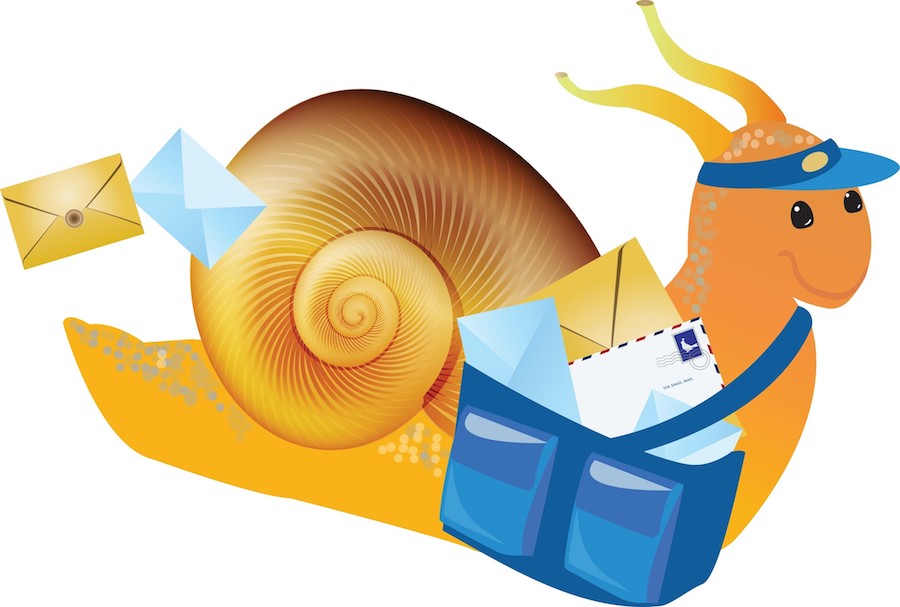40% response rate to Snail Mail in Medtech?

Does Snail Mail have a place in today’s medtech internet and email dominated marketing world? I have to admit that for the longest time I have emphatically said, “No!”. However, under special circumstances and executed correctly, you may get an excellent response rate. The key words here are “under special circumstances and executed correctly”. For small medtech device companies, focused mailings may be very effective.
For my international readers, snail mail = postal service or any service that delivers a document or set of documents to the addressee. In many English speaking countries, we give it the nick name of “Snail Mail” because it is always slower than an email.
Why have I said “No!” in the past? Because doctors and researchers are so busy. I have been in their offices and seen unread mail and magazines piled up on their desks. Many have administrators and secretaries that are determined not to let any solicitation mail reach the doctor’s desk. Finally, between the postage and printing costs of a campaign, it can be very expensive for a smaller company.
How did we just get a 40% response rate? Focus, authenticity, quality and a differentiated product.
Differentiated product– My client’s product is truly superior to the competition in every way. Unfortunately, my client’s company is not well known. It has very little brand equity.
Focus– The mailing was to 10 US researchers that were making presentations at a very small international conference on ophthalmic genetics. That’s right… only 10 researchers. Very focused. Another important factoid about these targeted doctors is that they are all highly respected and could become influencers if they acquired my client’s instrument in the future.
What was at stake? A $43,000 to $63,000 device. If only one researcher bought this device in the next year, the mailing was more than worth the effort.
Quality and authenticity– A form letter that was personalized in its address, salutation and in many cases had a personalized paragraph. For example, one researcher worked in the same building where another researcher had one of our devices. We referred to this in the letter. Another researcher’s clinic was near the US distribution office, so we offered to stop by any time to conduct a demonstration.
Quality– We spent the $6.95 on priority mail to get the researcher’s attention. Inside the US Post Office flat rate envelope was the letter and product information in a nice white envelope. On this white envelope was a large label that said, “Please read before attending XYZ conference”. This label was to help assure that a secretary might make an extra effort to put the envelope in front of the researcher knowing they were attending the conference.
Conference presence– Remember I said that this was a very small and specialized conference. Not many companies exhibit at these small conferences. Even though my client is a small company, he was exhibiting and was easy to see and approach in the intimate conference setting.
Frankly, when my European colleague told me that 4 of the 10 researchers stopped by the exhibit and that 2 of the 4 were very hot prospects, I was stunned. I wasn’t sure what to expect and felt if one or two people responded it would have been worth the effort. We are confident in at least 2 sales that could amount to $120,000. And, with this type of product, once they have one, they typically get one or two more a year later. Not bad for a day’s work.
Multiply this targeted approach over several small specialized conferences and the sales add up. This approach can benefit small to medium sized medtech companies that have high value products that are early in the product life cycle and/or need to create a success model.
Differentiated product + a focused approach + quality + authenticity = success.


